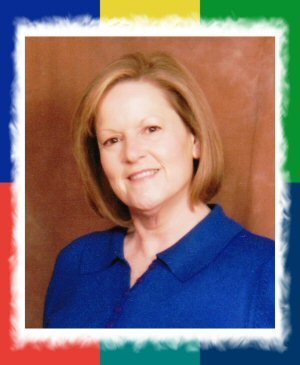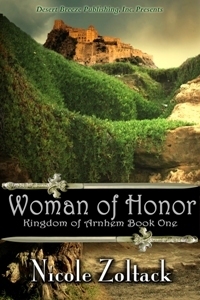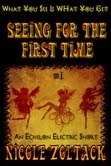Karen L. Syed's Blog, page 16
April 14, 2011
Connie Hullander – Author of Snowstorm
 My début novel, Snowstorm, has recently been released as an e-book by Echelon Press. Although it has taken a few years to arrive at this point, I still haven't quite gotten used to calling myself an author.
My début novel, Snowstorm, has recently been released as an e-book by Echelon Press. Although it has taken a few years to arrive at this point, I still haven't quite gotten used to calling myself an author.
During the last couple of weeks I couldn't help thinking about attending a writers' conference a few years ago. I'd already written a first draft of the book, but then I seem to always do things the hard way. (I really wish I'd stop that.) In the conference workshops, I heard authors, editors, and agents characterize writers in various ways. Someone said writers are artists who just want to close themselves up in a room and create in solitude. Another facilitator commented that people who write for a living secretly want to change the world. In a third workshop, a book editor stated the first book often reflects the author's passions.
Snowstorm is indeed the result of one of my passions: teenagers. I have been a teacher in both high school and college, and what I love about teaching is the students themselves. Then, there's the fact my husband is a psychologist who worked with teens for nearly twenty years. Combine my interest in adolescents with an understanding of how perfectly good children turn into angry teens and I developed, as the editor put it, a passion for troubled kids. But I know my limitations. I could not do the kind of work my husband did, so instead, I wrote a book about one of those prickly teenageers.
The story follows the struggle of a sixteen year-old girl named Carly, who is dealing with challenges common to lots of kids today. The reader get a view into Carly's inner thoughts as she makes tough decisions about who she will be.
So how close were the characteristics described by the workshop leaders? I'll give them the passion part – I did go there to craft my tale. As to the "artist" description, I can't say I think of myself that way, but working in a basement room alone is certainly true. Finally, I don't want to change the world. Nope, but I wouldn't mind doing some good for just one kid, and maybe that's good enough.
 Connie Hullander
was born and raised in Chattanooga, Tennessee. Through teaching in both high school and college, she gained an understanding of young adults and the challenges faced by so many of them. Currently she lives with her husband in South Carolina and is employed as an instructor at a technical college. Previously published works have included short stories for the annual anthology of the South Carolina Writers Workshop. Snowstorm is her first novel.
Connie Hullander
was born and raised in Chattanooga, Tennessee. Through teaching in both high school and college, she gained an understanding of young adults and the challenges faced by so many of them. Currently she lives with her husband in South Carolina and is employed as an instructor at a technical college. Previously published works have included short stories for the annual anthology of the South Carolina Writers Workshop. Snowstorm is her first novel.








LiveCam of New Baby Eagles
April 13, 2011
How to Write Realistic Dialogue (Guest Blogger)

Click Cover to Buy Now!
Well written, realistic dialogue is one of the most useful tools at an author's disposable. Nothing else can pull a reader from a story than unbelievable dialogue. Imagine a character like Mandy Moore's in A Walk to Remember. Now picture that character cursing. A bum on the streets won't use large, obscure words. Neither would a small child. Here are some tips for including authentic dialogue in your novels:
1. Go to the mall or other places where lots of people go. Sit on a bench and eavesdrop.
2. Create a character sketch. In order for your character's dialogue to be true to the character, it must reflect the character's flaws, weaknesses, strengths, and personality. A smoker character will not rant about the evils of the big bad tobacco companies.

Click Cover to Buy Now!
3. Large blocks of dialogue, similar to large blocks of description, are boring. Pepper some action throughout dialogue scenes. People often talk with hand gestures. Include movements and other actions.
4. Use swear words sparingly unless the character demands it. Some people hide behind them or use them for release. Other characters may only use them under highly stressful situations. And if you are writing a historical piece, look up the curse words of that time period. In Woman of Honor, my high fantasy romance novel, my characters sometimes yell, "God's Teeth!" or "God's Wounds!"
5. While using words appropriate to locale (some regions say soda, others pop), try to avoid dating your piece with slang.
6. If you are going to use accents, make certain that they are constant throughout the novel but not overbearing.
7. Once you write a dialogue scene, read it aloud. Does it flow? Does it make sense? Does it further the story and add details to the plot?
 Links:
Links:
Website: http://www.NicoleZoltack.com
Blog: http://NicoleZoltack.blogspot.com
Facebook: http://www.facebook.com/Nicole.Zoltack
Facebook Fan Page: http://tinyurl.com/Zoltack-FB-Fanpage
Myspace: http://www.myspace.com/scarlett9284
Twitter: http://twitter.com/NicoleZoltack
Email: Nicole.Zoltack@gmail.com
Tagged: author, books, Echelon Press, publishing, writers, Writing








Karen L. Syed's Blog
- Karen L. Syed's profile
- 4 followers











